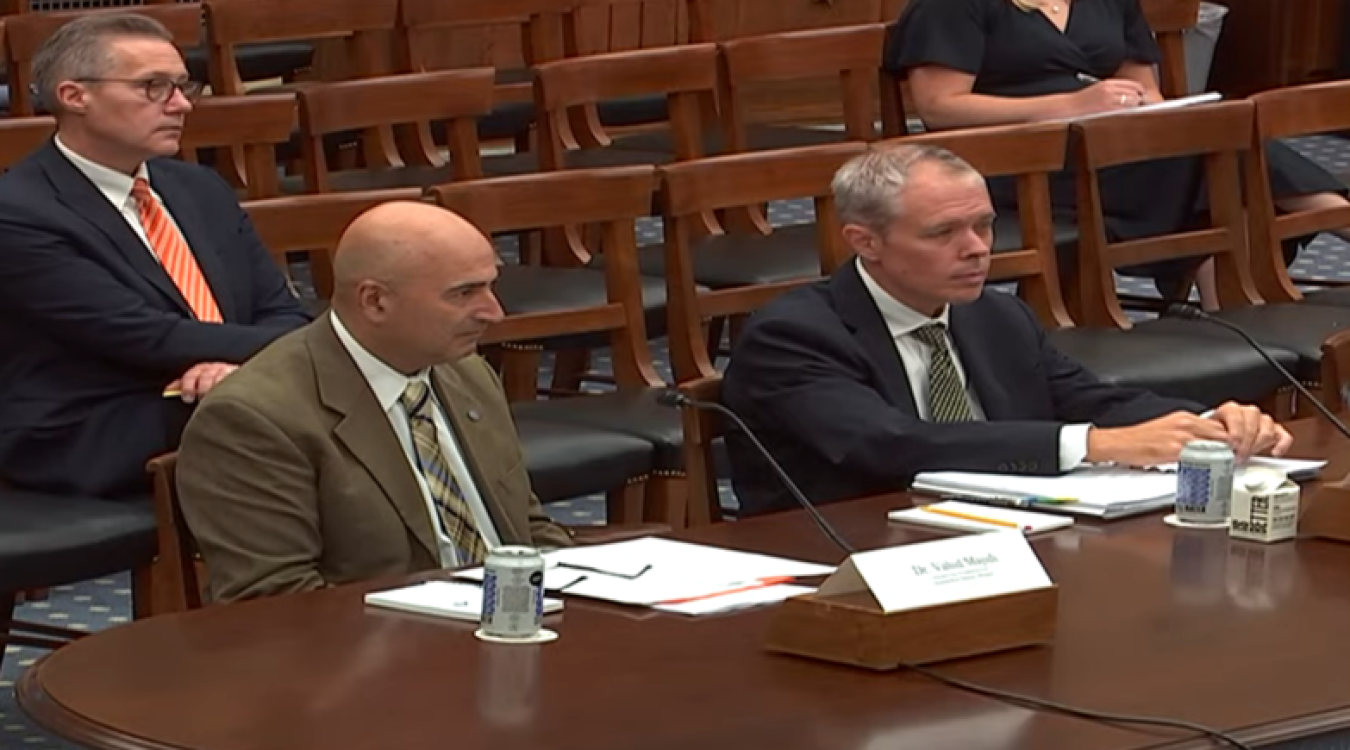Advancements in technology research and development (R&D) enable EM to continue making steady progress in cleaning up sites in communities that supported U.S. defense efforts over the decades, EM Senior Advisor William “Ike” White told Congress on July 13
Office of Environmental Management
July 19, 2022Advancements in technology research and development (R&D) enable EM to continue making steady progress in cleaning up sites in communities that supported U.S. defense efforts over the decades, EM Senior Advisor William “Ike” White told Congress on July 13.
“Given the magnitude of the remaining cleanup mission, EM must keep developing innovative approaches to accelerate progress, increase efficiency and protect human health and the environment,” White said in testimony before the House Committee on Science, Space and Technology’s energy subcommittee.
“As we continually work to enhance our R&D efforts, EM takes a comprehensive approach to prioritizing all cleanup work, including the associated technology development,” White said.
Alongside White, the director of the Savannah River National Laboratory (SRNL) told lawmakers of the lab’s role in developing and supporting applied science and engineering innovation for DOE’s 15 active cleanup sites and 101 post-closure management sites.
“To accelerate cleanup missions, our laboratory provides processing, remediation and closure approaches with a rigorous data-driven foundation. We identify the barriers to success and then develop high-impact technologies to overcome them, while minimizing waste production in the disposition of nuclear materials,” said Vahid Majidi, SRNL director.

Lawmakers were told that EM has completed cleanup activities at 92 of 107 sites, most recently completing legacy work at the Brookhaven National Laboratory in New York. These historical accomplishments were enabled by the significant investments that Congress made in the EM program and aided by technology, and R&D.
White said that by leveraging the expertise of the national labs, other DOE offices, industry and academia, EM routinely deploys technology advancements in the areas of tank waste cleanup, soil and groundwater remediation, facility decommissioning and decontamination, and worker safety.
Multiple national laboratories have been involved in efforts that have led to innovative environmental monitoring systems that provide long term protection of soil and groundwater contamination at sites. White said that applied R&D efforts have led to advancements in the area of air filtration and treatment to better protect workers as they perform cleanup work.
For example, one of EM’s top priorities is addressing Hanford’s tank waste mission, which represents one of the Department’s largest financial and environmental liabilities. That is why EM is leveraging the expertise of SRNL and the associated Network of National Laboratories for Environmental Management and Stewardship to develop an R&D Roadmap for accelerating the Hanford tank waste mission. Majidi said technology R&D has led to accelerated tank waste treatment at the Savannah River Site that also may have applications at other sites.
Utilizing increased funding, EM through its Minority Serving Institutions Partnership Program is also expanding relationships with Historically Black Colleges and Universities, and other educational institutions that enroll a significant percentage of students from minority groups.
“EM is executing the Minority Serving Institutions Partnership Program to bring in more diverse voices to help solve technical challenges” Majidi said.
White added, “This will enable us to add a technology curriculum and a research grant partnership involving EM, minority serving institutions and the national labs.”
In partnership with the national laboratories, DOE is conducting a holistic technology review to ensure that the labs have overall unity of effort, that they are efficient, and that they provide maximum value. EM is committed to maximizing the benefit of available R&D investments, while maintaining the momentum of cleanup progress, meeting regulatory milestones, and bringing EM sites closer to completion.
Also appearing at the hearing were John Plodinec, vice chair of the Committee on the Independent Assessment of Science and Technology for the DOE’s Defense Environmental Cleanup Program, an arm of the National Academies of Sciences; and Nathan Anderson, director of the Natural Resources and Environment team at the Government Accountability Office.
Watch the July 13 hearing here.
To receive the latest news and updates about the Office of Environmental Management, submit your e-mail address.

